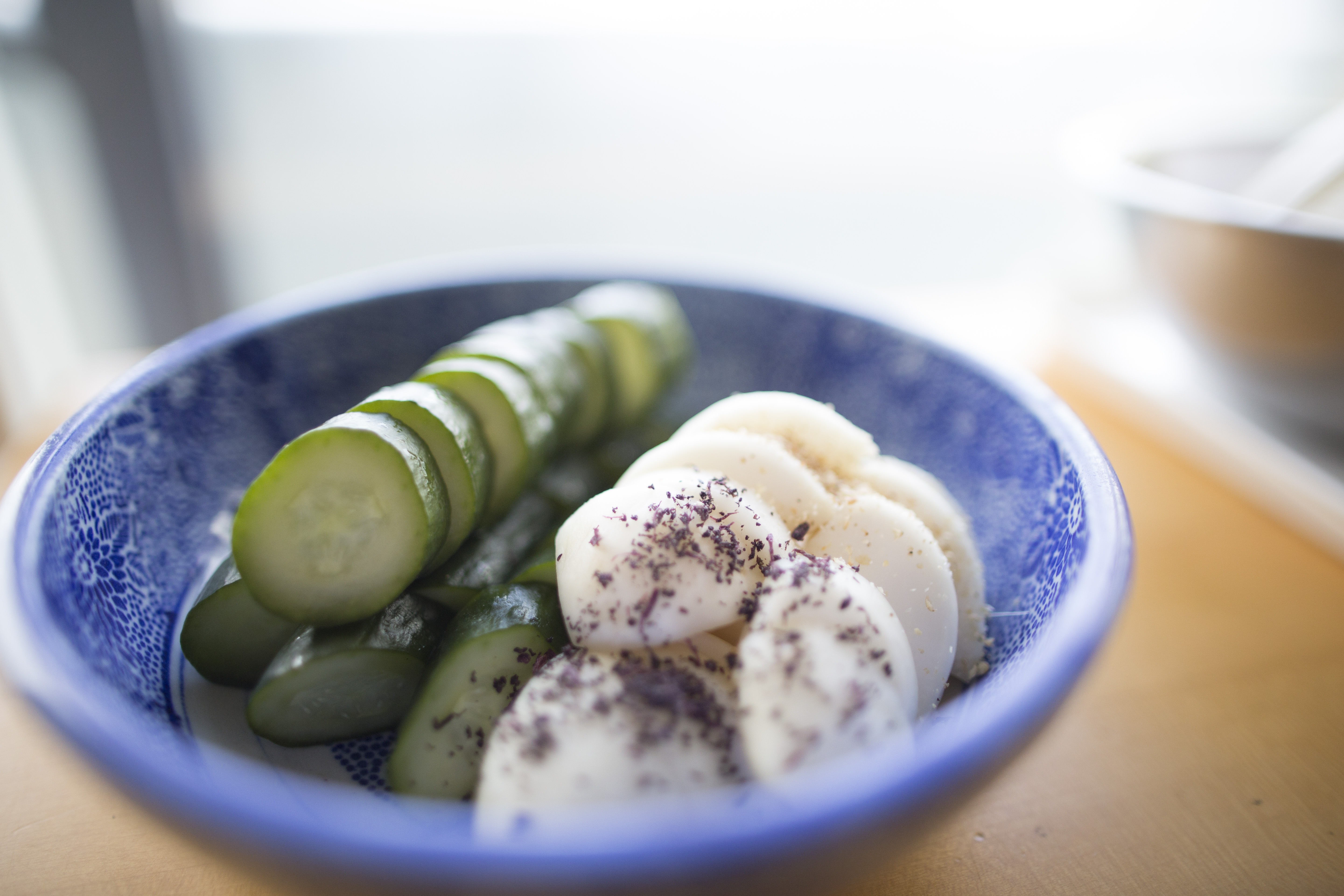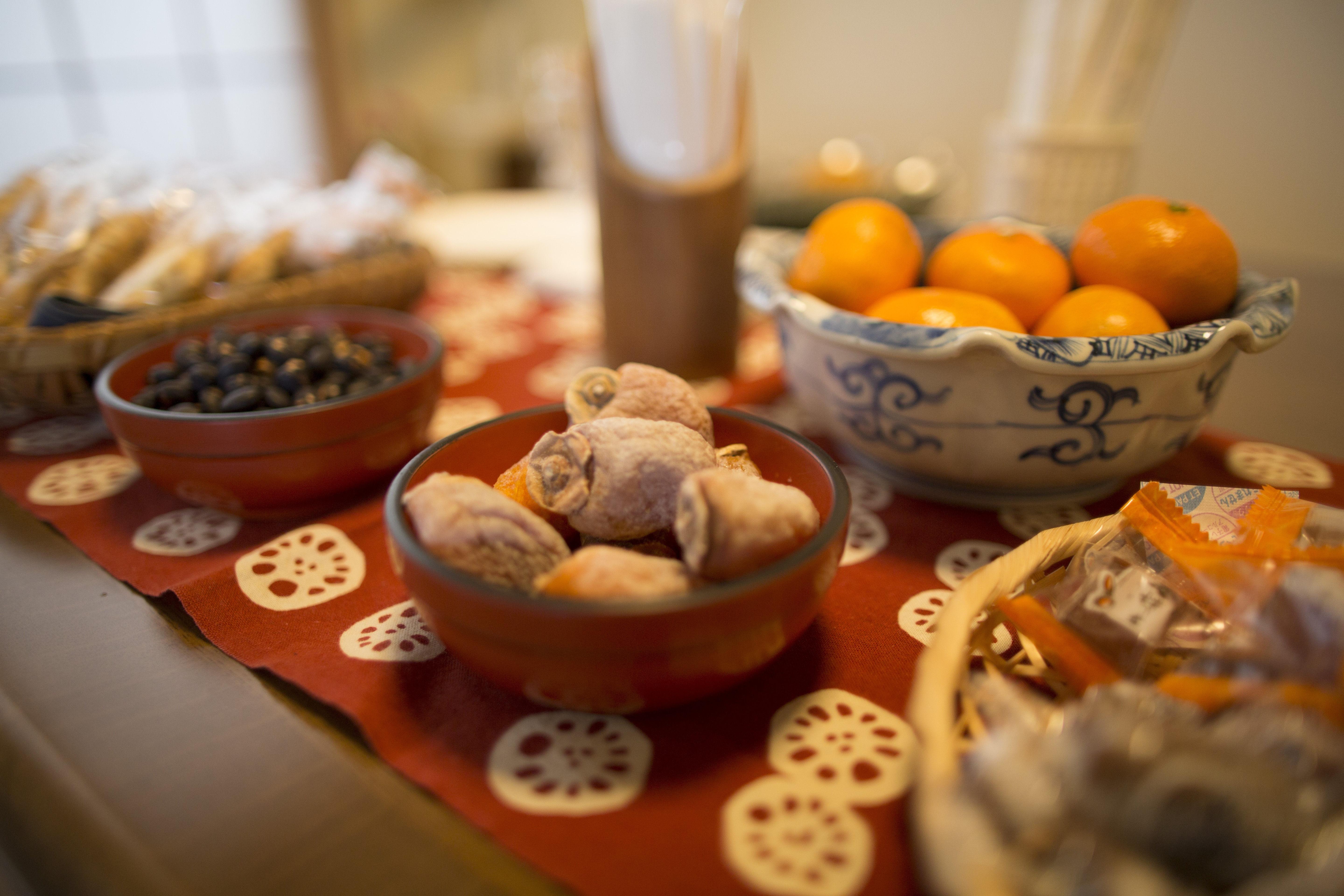I arrived in Tokyo in the evening, the limousine drivers at the airport lined up like undertakers—black ties, white shirts, all standing in a respectful queue. Brightly colored vending machines were everywhere, selling corn soup, toys in plastic eggs, beer, batteries and popcorn.
Early the next morning, I walked two blocks to the corner 7-Eleven (there are over 22,000 of them in Japan) and spent half an hour looking over packaged kombu, bento boxes, ramen, steamed dumplings, wine, sake, whiskey, onigiri (rice balls wrapped in seaweed) and candies—Meltykiss, Crunky and Japanese flavors of KitKat bars. The store also provides takeout and catering.
Hours later, I’m welcomed to the home of Elizabeth Andoh, a philosopher and cook. She came to Japan in 1967, married a local in 1969 and has mostly lived there ever since. Her apartment is tiny even by New York standards. Shoes are removed, slippers provided. A narrow hallway connected to the kitchen has a lovely view of Mount Fuji.
Andoh points out that one of the hallmarks of Japanese cooking is “kansha,” which loosely translates to nothing wasted. Looking around her apartment, kansha is everywhere. (The trick is closets.) Organization is key to success, whether we are talking about chopsticks, the rice cooker (on a hinged, pull-out shelf) or cooking supplies. Everything is bagged and tagged. Even the water used to rinse rice is allowed to sit and separate; the thick starchy liquid at the bottom is used as hand cream.


For a practical culinary application of kansha, Andoh prepares chicken teriyaki donburi. Donburi refers to a Japanese bowl used to hold rice, as well as to the meal itself—a simple, highly seasoned topping served on rice. And although we in the U.S. think of teriyaki as a sauce, the term simply refers to foods that are glazed.
The dish starts with boneless, skin-on chicken thighs, something that doesn’t exist in American markets; Andoh marinates them in a slurry of sake and cornstarch. The sauce is a mixture of sake, mirin, soy sauce and sugar, briefly heated in a skillet to dissolve the sugar. Grated fresh ginger, added off heat, brightens the flavor.
Andoh notes that one should also practice “gaman,” or self-restraint. As the chicken cooks, resist the urge to stir until a crust forms on the bottom of the meat. It allows the chicken to release from the pan and adds flavor and texture to the final dish. At the end, the meat that tops the rice is tender and glossy with its sweet-savory glaze.
Next time you want to exercise some Japanese ethos, I suggest you try making our version of chicken teriyaki donburi. It will teach you frugality, patience and happiness—in the form of a richly flavored weeknight supper that comes together in under an hour.
Our donburi draws deep flavor from three rice-based ingredients: mirin, sake and rice vinegar. Though their production processes are similar—all are made with a starchy rice base and koji, a fungus that gives them much of their flavor—their uses are distinct.
Buying and Uses
Mirin: Lightly syrupy, sweeter than sake, with a touch of umami and light fermented rice flavors, mirin can lend body to sauces. A quality mirin can be tricky to find—most offerings in the U.S. are “aji mirin” (“tastes like mirin”) and contain added sugar. Avoid brands that include glucose or corn syrup in their ingredient lists. Use mirin to sweeten glazes, bolster broths and balance the sodium in soy-heavy sauces.
Sake: Sake is subtly sweet and lightly earthy, with a slight umami flavor. Though it’s used much like wine in Asian recipes, it lacks wine’s acidity. The world of sake is wide—flavors might be fruity, floral, even bubblegummy—but for cooking, we opt for basic, inexpensive bottles. Mix it into sauces, marinades and steaming liquids.
Rice vinegar: Gently sharp and faintly sweet, rice vinegar adds a mild tang to recipes. When buying, check the ingredient list. Avoid seasoned rice vinegar, which has added sugar and salt. Rice vinegar is essential for making sushi rice, but it also works great in dressings, dipping sauces and quick pickle recipes. ◆




